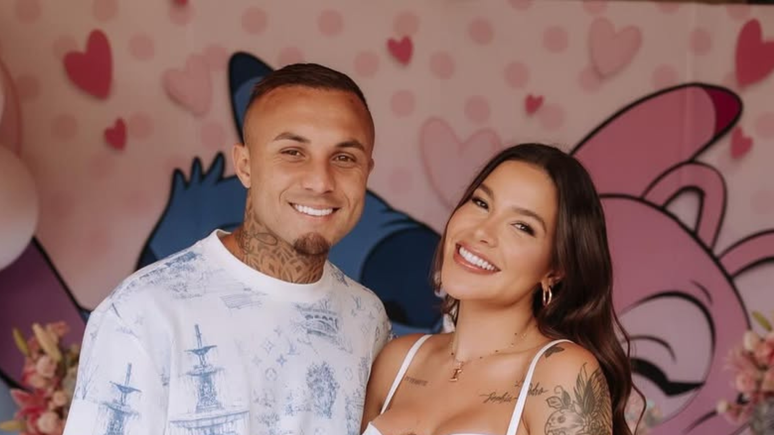The Joker, one of pop culture’s most iconic and complex villains, emerged as Batman’s antagonist, but over the decades he has transcended the pages of comics to become a prominent figure in animation, films, TV series and in games.
Each new interpretation brought something unique, reflecting the cultural and social changes of each era. We explore the evolution of the Joker over the years, highlighting his major appearances and how each version contributed to the construction of this fascinating character.
Origins of the Joker in comics
The Joker made his comic book debut in “Batman #1” in 1940, created by Bill Finger, Bob Kane and Jerry Robinson. Inspired in part by the character Gwynplaine from the film “The Man Who Laughs” (1928), the Joker was initially conceived as a cold, calculating killer with a macabre clown-like appearance. His white skin, green hair and permanent smile quickly became his trademark.
1940s to 1950s: The Clown Prince of Crime
During the 1940s and 1950s, the Joker was primarily depicted as an eccentric criminal with a sadistic sense of humor. These early stories alternated between the grotesque and the comical, laying the foundation for his volatile personality.
However, comic book censorship in the 1950s, influenced by Fredric Wertham’s book “Seduction of the Innocent,” forced writers to tone down the character, turning him into a harmless trickster.
1960s: The era of television
The “Batman” TV series, which aired from 1966 to 1968, brought a new interpretation of the Joker, played by Cesar Romero. This version was more colorful and comedic, in keeping with the tone of the series. Romero refused to shave his famous mustache, which was visible under his white makeup, but his charismatic, larger-than-life portrayal helped popularize the character with a new generation.
The new era of comics
70s: return to origins
In the 1970s, with the fall of comic book censorship, the Joker returned to his darker roots. Writer Dennis O’Neil and artist Neal Adams were instrumental in reintroducing the Joker as a homicidal psychopath. In “Batman #251” (1973), the story “The Joker’s Five-Way Revenge” redefined the villain, emphasizing his unpredictability and danger.
1980s: Rise of the Joker
The 1980s were crucial to the evolution of the Joker. Frank Miller, in his graphic novel “The Dark Knight Returns” (1986), presented an even more disturbing and violent version of the Joker.
However, it was “The Killing Joke” (1988), written by Alan Moore and illustrated by Brian Bolland, that became one of the most influential stories. This tale explores the Joker’s origins, suggesting that he was a failed comedian driven mad after a horrible day, cementing the idea that “all it takes is one bad day to turn an ordinary man into a monster.”
Joker at the cinema
1989: Jack Nicholson
The Joker’s first big leap into cinema came with Tim Burton’s “Batman” in 1989. Jack Nicholson played the villain with a touch of madness and charm. His performance was acclaimed and became a reference for future interpretations. Nicholson’s characterization combined elements of dark humor and horror, becoming a cultural icon.

2000s: Heath Ledger
In 2008, the Joker returned to the screen in Christopher Nolan’s “The Dark Knight,” played by Heath Ledger. This version of the Joker was a chaotic anarchist, lacking any motivation other than to spread chaos.
Ledger’s performance was intense and haunting, earning him a posthumous Oscar for Best Supporting Actor. This Joker was a watershed moment, influencing all future interpretations of the character.

2010s: Jared Leto and Joaquin Phoenix
Jared Leto’s Joker in “Suicide Squad” (2016) brought a modern and controversial approach, with a punk aesthetic and erratic behavior. Although it received mixed reviews, this version attempted to differentiate itself from its predecessors.

In 2019, Joaquin Phoenix took on the role of Joker in the solo film “Joker”, directed by Todd Phillips. This performance won universal acclaim and an Oscar for Best Actor. The film explored the depths of psychosis and alienation, presenting a dark and realistic origin for the villain.

The Joker in animations
1990s: Mark Hamill
The animated series “Batman: The Animated Series” (1992-1995) featured one of the most beloved versions of the Joker, voiced by Mark Hamill. Hamill’s voice, combined with the series’ design and writing, gave the character a unique complexity and charm. Hamill continued to voice the Joker in several animated projects and games, becoming for many fans the definitive voice of the villain.

2000s and beyond
In subsequent animated series such as “The Batman” (2004-2008) and “Batman: The Brave and the Bold” (2008-2011), the Joker has been reinvented in numerous ways, each bringing a new interpretation while maintaining the elements essentials of the character of the Jolly.
The Joker in video games
90s: first games
In the 1990s, the Joker appeared in several Batman-based games, but it was with Rocksteady Studios’ “Arkham” series that he truly shone. Mark Hamill reprized his role as the voice actor, giving a memorable performance.
2000s: Arkham series
The “Batman: Arkham” series (2009-2015) redefined the Joker in video games. With a detailed design and compelling story, Hamill’s Joker was both menacing and charismatic. “Batman: Arkham Asylum” and its sequels received critical and fan acclaim, solidifying the Joker as a memorable villain in video games.

The cultural impact and legacy of Joker
The Joker isn’t just a comic book villain; he has become a cultural icon. Its ability to reflect society’s anxieties and fears makes it eternally relevant. From comic psychopath to philosophical anarchist, each version of the Joker offers a new perspective on madness and evil.
Various studies and analyzes have been dedicated to the psychology of the Joker. He is often seen as a symbol of chaos and madness, challenging notions of morality and order. His relationship with Batman is deeply symbiotic and represents two sides of the same coin.
The Joker has influenced not only comics and films, but also literature, art and popular culture in general. It is a recurring theme in cultural and philosophical analysis, inspiring debates on the nature of evil and the fragility of human sanity.
In conclusion, the Joker has undergone an incredible evolution over the decades, adapting and transforming to remain relevant and impactful. His ability to reflect society’s fears and anxieties ensures that he will remain a central character in pop culture for years to come.
The post Comics, animations and films: the evolution of the Joker over the years appeared first on Olhar Digital.
Source: Olhar Digital
Rose James is a Gossipify movie and series reviewer known for her in-depth analysis and unique perspective on the latest releases. With a background in film studies, she provides engaging and informative reviews, and keeps readers up to date with industry trends and emerging talents.






